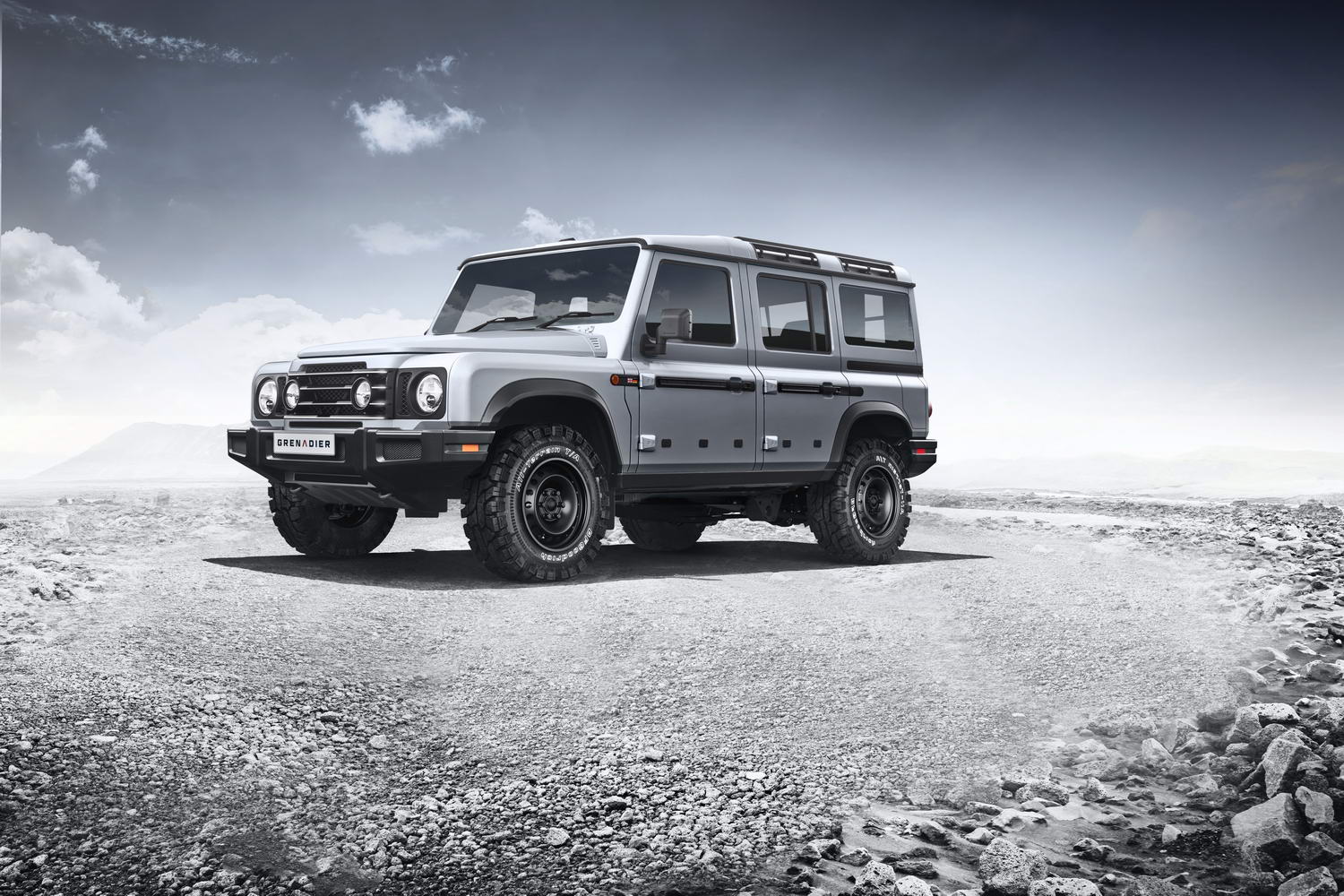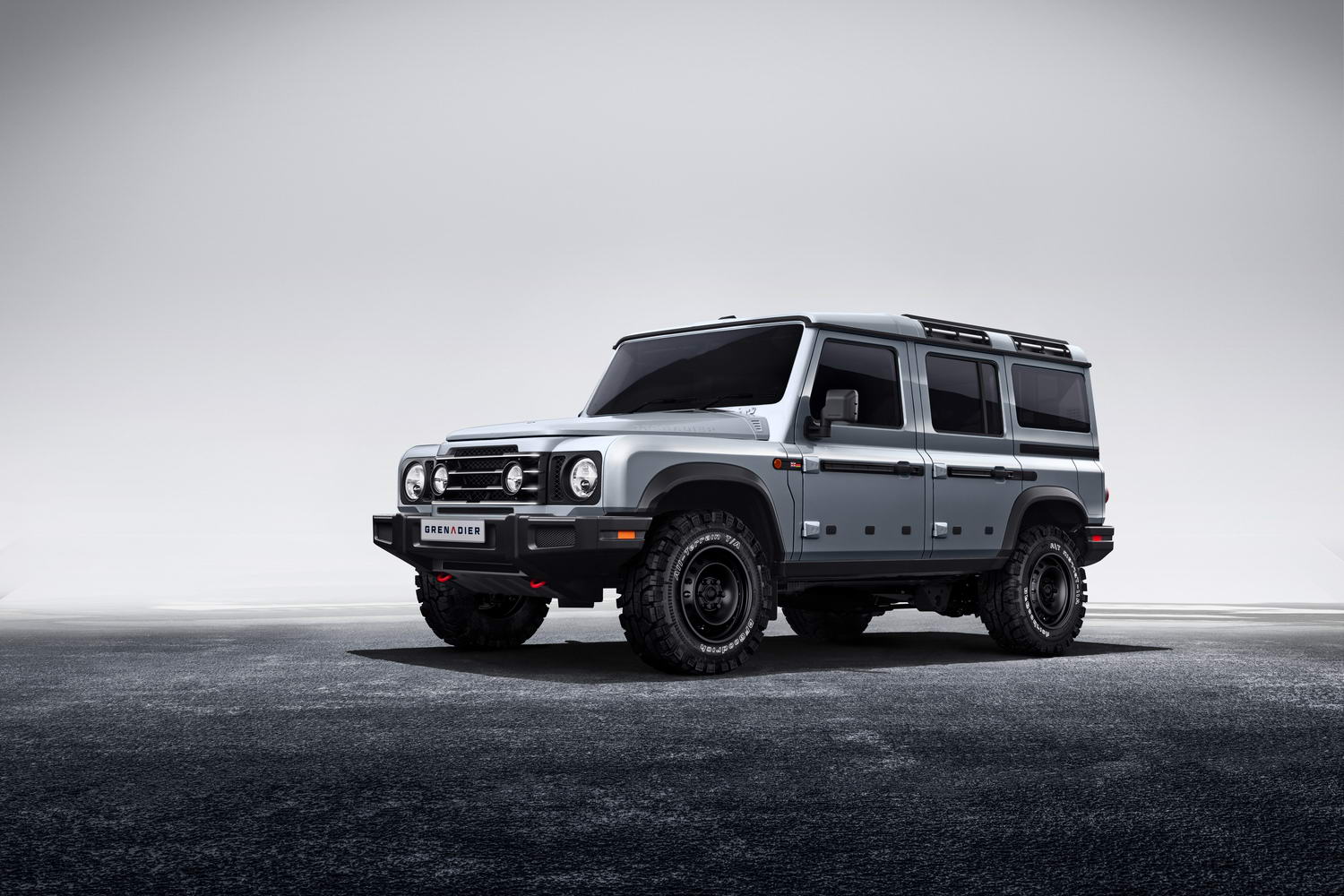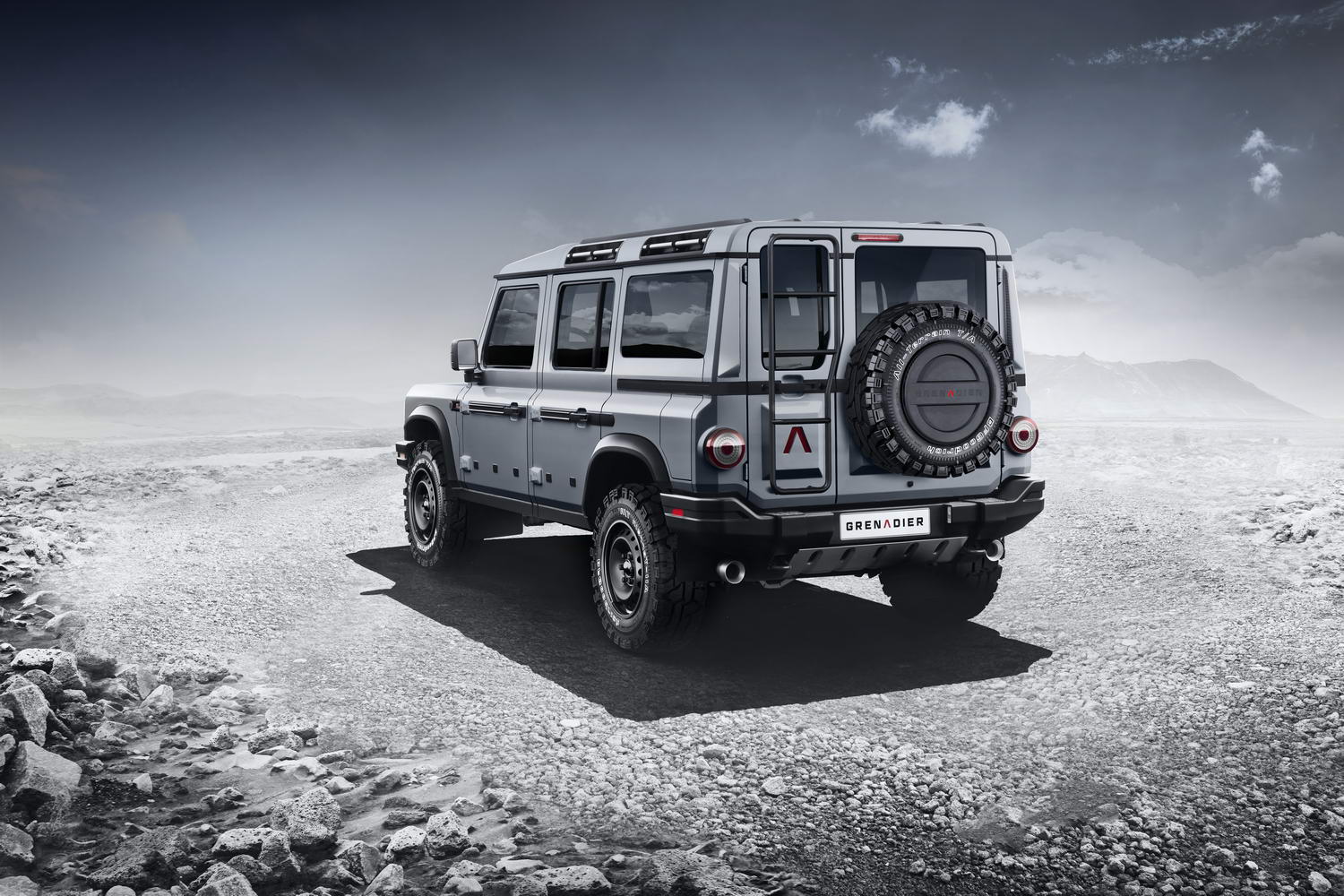Ineos, a gigantic petrochemical company, made waves when it announced it would build a rugged, square-shaped rival for Land Rover's Defender. Called the Grenadier, that car is now a reality and has been officially revealed today.
Designed to fill the gap left by the old Defender
The first proper images of the Grenadier show a car that's distinctly like an old Land Rover Defender, so much so that doubtless there's money to be made by lawyers arguing over copyright law. Engineered for the British-based company by Austrian-based Magna-Steyr, the Grenadier has been designed to be utilitarian and hard-working, while the new Land Rover Defender has moved to become a more stylish, lifestyle vehicle.
It's that utilitarian gap in the market that Ineos chairperson, Jim Ratcliffe, wanted to exploit. With the new Defender moving upmarket, he initially approached Land Rover about building the old model under licence, but was rebuffed.
Instead, the Grenadier - however close you may feel it looks to an old Defender - has been engineered from the ground-up. That has allowed Ineos to jampack it full of potentially helpful features for those that like their motoring to be hard-working, adventurous and rugged.
An 'easy-to-read' design
"The brief was simple. We set out to design a modern, functional and highly capable 4x4 vehicle with utility at its core", said Toby Ecuyer, Head of Design. "A design that is 'easy-to-read', with no ambiguity about the Grenadier's role in life. There to do everything you need, and nothing you don't. Nothing is for show. Modern engineering and production techniques ensure the Grenadier is highly capable, but we have been able to stay true to the essence of creating a utilitarian vehicle that will stand the test of time."
Ecuyer has made sure that there are no design fripperies on the Grenadier, and that styling features often have dual purposes. So the side rubbing strips are also rails on which extra equipment or luggage carriers can be hung. The round headlights are the same size and shape on both sides, making them easier to replace. The roof has bars and strips so that you can carry loads without the need for a roof rack (although one can of course be fitted). The tops of the front wings are strong enough to act as outdoor seating, and there's a rear ladder for roof access.
At the back, there's also a double-door system, with a narrow door on the left for easy access in tight spaces, and a larger door on the right for full-width access to the cargo area. That is shaped and sized to be able to carry a standard Euro pallet and, if that's not practical enough for you, there will be a crew-cab pickup version too.
Easy-fit accessories
The Grenadier's electrical system has easy-access points at the front and rear of the roof so that it's easier to fit extra lights, or other electrical accessories, and there's a 'wet' storage box at the back, which can be opened from outside the car, for storing damp or muddy bits of kit.
Ineos says that the Grenadier has been designed to be 'open source' and, while it will offer its own in-house accessories, is also encouraging both owners and third-party suppliers to get creative.
Next up comes a year of final development work before the Grenadier can go on sale. Dirk Heilmann, Ineos Automotive's CEO, said: "We are delighted to be able to share the design of the Grenadier so early in the process. Most manufacturers would hold back, but we are a new business, building a new brand, and we want to take people with us on this exciting journey.
"Showing the design now allows us to focus on the critical next phase of the vehicle's development, testing its capability and durability. We have a very challenging programme ahead, as we put prototypes through their paces in all conditions, on the way to accumulating some 1.8 million test kilometres over the coming year. From today the covers are off. Testing 'in plain sight' without the need for camouflage wrapping, foam blocks or fake panels is an added benefit."
While we don't have official tech details yet, it's an open secret that the Grenadier will use a BMW six-cylinder engine for power, and Ineos is having a small dig at the old Land Rover Defender when it says that the car has "No limitations dictated by an old platform: we started from scratch and there is no compromise on any angle." It'll have a one-tonne payload, 3.5-tonne towing capacity and is based on a traditional ladder-style chassis with separate body, so is clearly designed for serious off-roading rather than on-road comfort. ZF is supplying the gearbox (an eight-speed automatic) while the heavy-duty axles are provided by specialist firm Carraro.
The Grenadier will be built at a factory in Wales (with another factory in Portugal building components and body assemblies) and while it doubtless will now face significant headwinds in terms of the shift to electrification, and the difficulties of launching a new motoring brand into the teeth of a recession, Ineos chairperson Jim Ratcliffe is looking forward to the challenge: "The Grenadier project started by identifying a gap in the market, abandoned by a number of manufacturers, for a utilitarian off-road vehicle. This gave us our engineering blueprint for a capable, durable and reliable 4x4 built to handle the world's harshest environments. But it had to look the part as well. As you will see today, Toby and his team have done a great job in delivering a design that is both distinctive and purposeful."


